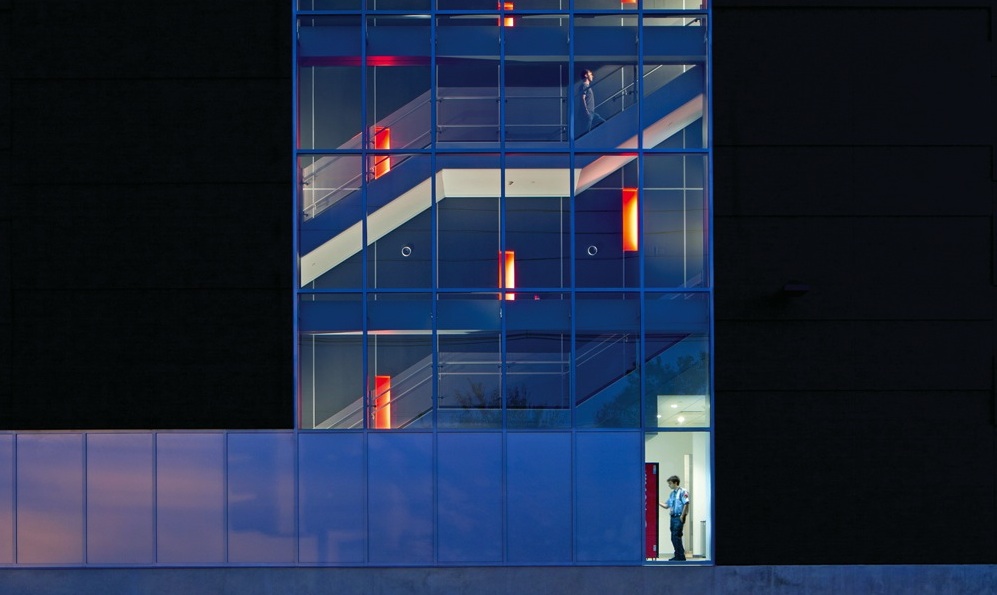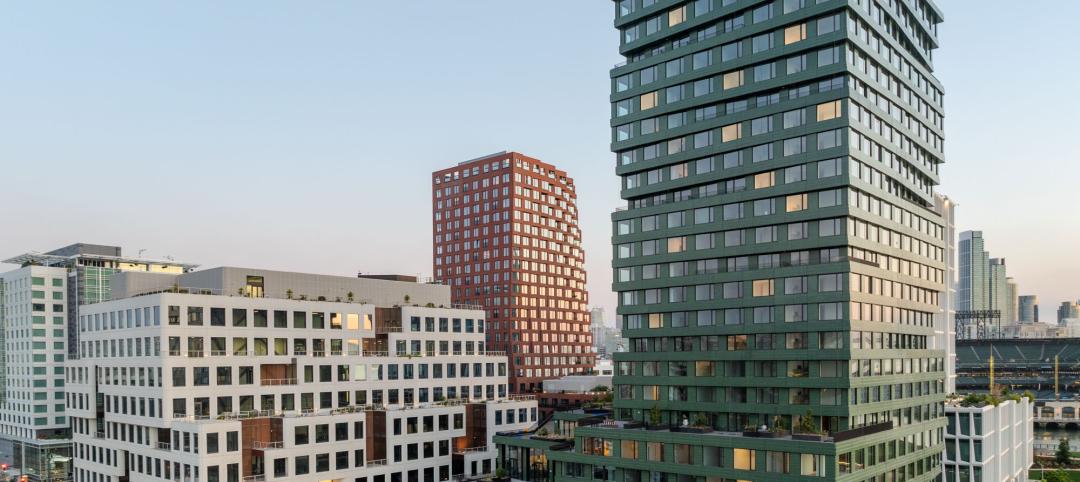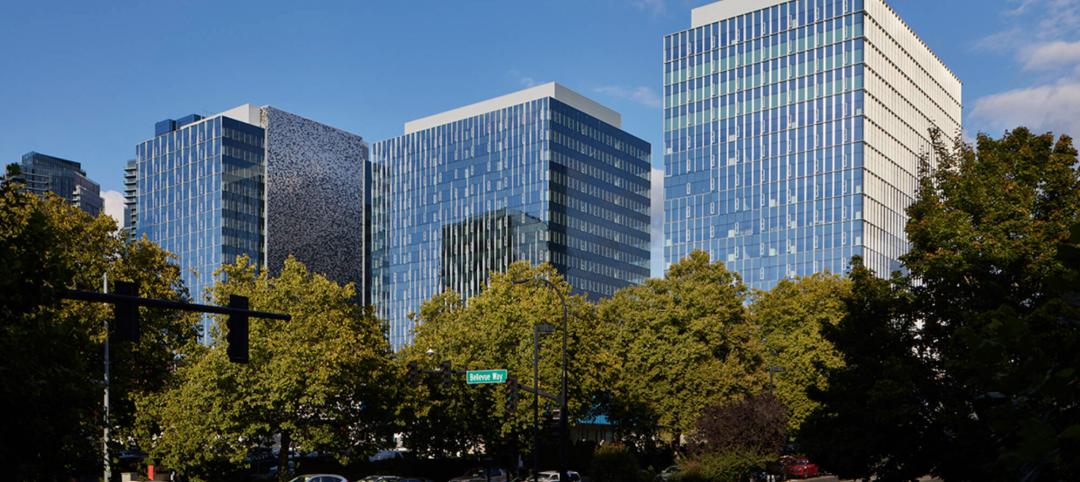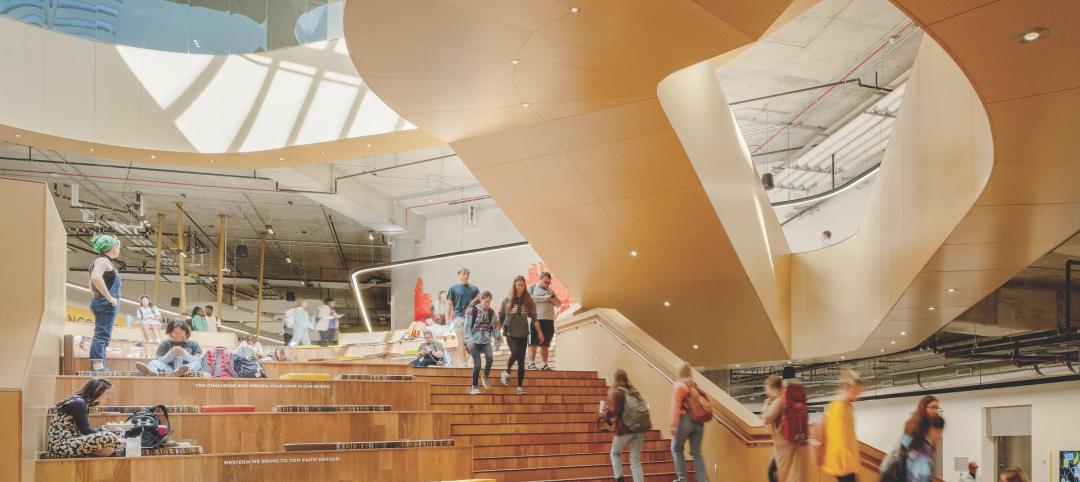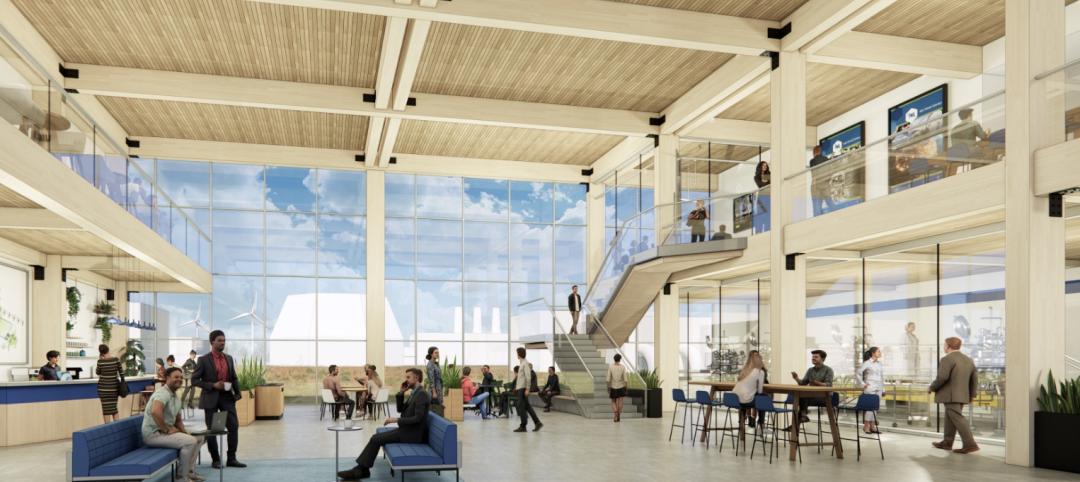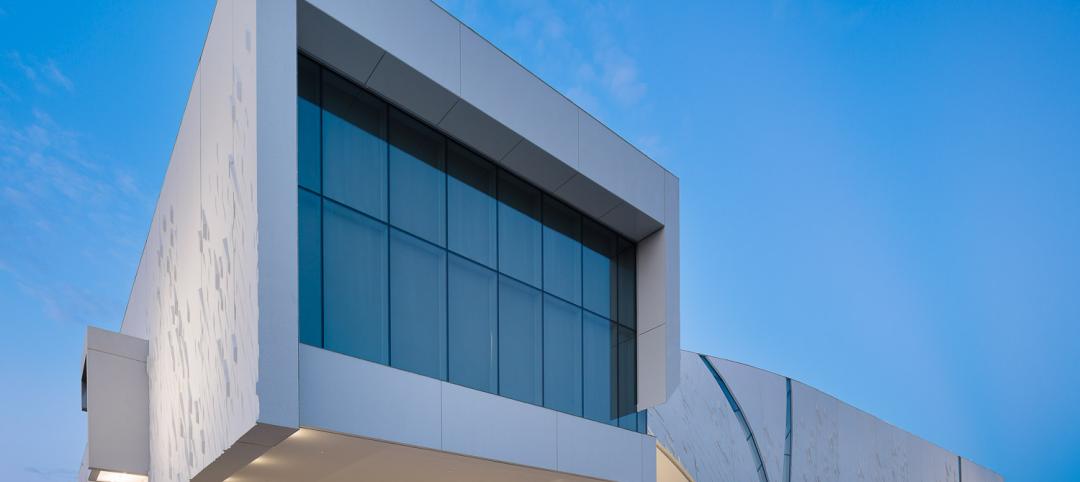Any way you look at it, the data center market remains one of the healthiest sectors of the nonresidential construction industry. As the growth of cloud computing and mobile technology continues, the need for storage and computing power will expand exponentially.
Cisco predicts global data center traffic to grow threefold and reach a total of 7.7 zettabytes in annual traffic by 2017 (a zettabyte is one billion terabytes, in case you were wondering). The fastest-growing component is cloud traffic, which is expected to expand 4.5-fold from 1.2 zettabytes in 2012 to 5.3 zettabytes by 2017. In fact, by the end of 2014, cloud-based data centers will, for the first time, surpass traditional data centers in terms of total workload, says Cisco.
In its most recent forecast report (http://tinyurl.com/datacenterforecast), technology research firm TechNavio called for the global market for data center construction to register an annual compound growth rate of 21% through 2018. Much of that growth is expected to occur in the colocation facilities segment, as corporations and other data enterprises look to outsource their increasingly complex and costly—and often outdated—data center operations.
The maturation of the modular and containerized data center sector may eventually hinder the growth of traditional data center construction services, according to TechNavio analysts. As data center owners look to expand quickly and get online faster, a growing number are turning to “plug and play” and “data center in a box” solutions in lieu of site-built systems and facilities.
The technology enables faster scaling and installation, and often comes equipped with the required power and cooling solutions, as well as built-in control, monitoring, and management functions to maximize performance.
TOP DATA CENTER SECTOR ARCHITECTURE FIRMS
2013 Data Center Revenue ($)
1 Gensler $25,839,736
2 Corgan 23,560,060
3 HDR 15,150,000
4 Page 13,950,000
5 Sheehan Partners 5,666,072
6 Little 5,450,648
7 RS&H 4,900,000
8 Callison 3,940,188
9 Clark Nexsen 3,186,054
10 Environetics 2,947,119
SEE FULL LIST
TOP DATA CENTER SECTOR ENGINEERING FIRMS
2013 Data Center Revenue ($)
1 Fluor Corporation $243,370,000
2 Jacobs 47,490,000
3 Syska Hennessy Group 41,934,230
4 URS Corp. 25,100,000
5 Vanderweil Engineers 21,588,000
6 Integrated Design Group 13,574,682
7 Parsons Brinckerhoff 12,185,435
8 Environmental Systems Design 10,063,915
9 Arup 9,997,297
10 Highland Associates 8,400,000
SEE FULL LIST
TOP DATA CENTER SECTOR CONSTRUCTION FIRMS
2013 Data Center Revenue ($)
1 Holder Construction $1,124,000,000
2 Turner Construction 512,000,000
3 DPR Construction 506,001,637
4 Structure Tone 400,450,000
5 Mortenson Construction 298,590,000
6 Gilbane 241,967,522
7 Balfour Beatty US 202,427,241
8 Hensel Phelps 177,120,000
9 Hoffman Construction 168,000,000
10 HITT Contracting 136,900,000
SEE FULL LIST
Cisco, Dell, and Huawei are among the hardware manufacturers offering modular and containerized solutions, and are no doubt taking market share from AEC firms, including many of the Giants 300 firms.
Giants 300 coverage of Data Centers is brought to you by Siemens http://w3.usa.siemens.com
Of the 364 AEC firms that completed the BD+C Giants 300 survey, more than a third (36%) reported at least some revenue from data center work in 2013. Thirty-four firms said that at least 10% of their total revenue in 2013 was derived from the data center construction market, and 11 firms relied on the sector for more than a quarter of their business.
Growth of Green
Stricter energy regulations and the rising cost of operating data facilities continue to drive demand for highly energy-efficient spaces. TechNavio expects the construction market for green data centers to grow at an annual rate of 31% between 2013 and 2018.
“The growing concern over reducing the computing costs for companies and data center facilities leads to the adoption of solutions such as natural air cooling and precision data center cooling,” said Faisal Ghaus, Vice President of TechNavio.
Facebook’s prefab concept aims to slash construction time in half
Less than a year after opening its ultra-green, hydropowered data center facility in Luleå, Sweden, Facebook is back at it in Mother Svea with yet another novel approach to data center design. In May, the tech giant broke ground on an expansion to its Luleå facility, which is rated as one of the most energy-efficient data centers in the world, with an average power usage effectiveness (PUE) of 1.05.
With Luleå 2, the company expects to achieve the same energy performance, but with a construction and deployment schedule that is roughly half its typical data center project. To do so, the Building Team is implementing Facebook’s newly developed Rapid Deployment Data Center (RDDC) concept, which utilizes modular and Lean design principles to streamline planning and construction, reduce the amount of materials, and create facilities that are more site-agnostic, according to Marco Magarelli, AIA, Architect, Datacenter R&D with Facebook.
“By deploying pre-manufactured assemblies, a majority of the components can be used interchangeably,” wrote Magarelli in a recent blog post on the RDDC concept. “It’s our hope that by standardizing the designs of our component assemblies, much like we do with OCP servers, we can deploy a unitized data center into almost any region in the world faster, leaner, and more cost effectively.”
Developed through the Facebook-initiated Open Compute Project, which aims to crowdsource data center design, the RDDC approach relies on two core prefab concepts:
Chassis assembly method. Pre-assembled steel frames 12 feet wide and 40 feet long serve as the “chassis,” on which the vital data center components—cable trays, power busways, containment panels, lighting, etc.—are bolted in a factory, much like an auto assembly line.
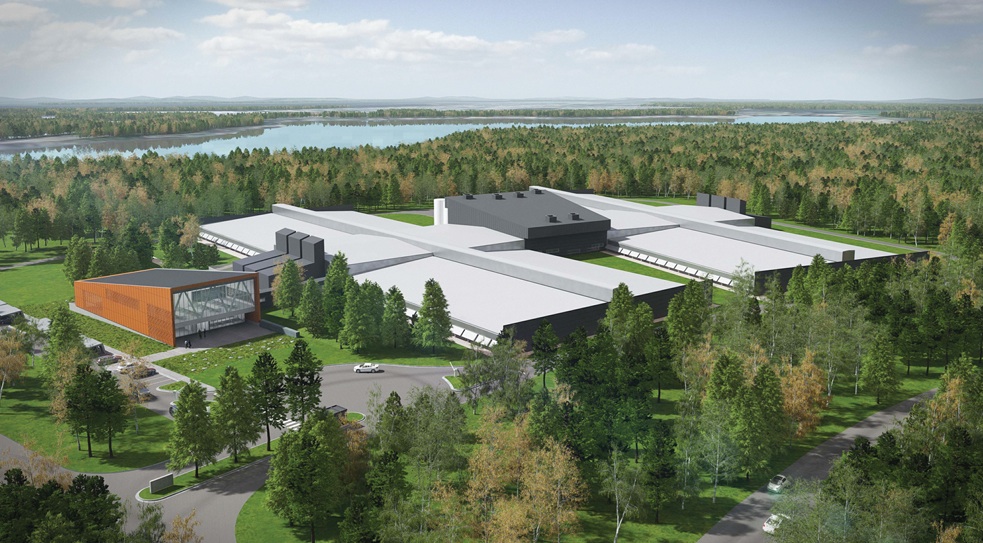
In May, Facebook broke ground on an expansion to its data center campus in Luleå, Sweden. Using a new prefab construction process, the tech giant expects to build the new data center twice as fast as the first facility. PHOTO: FACEBOOK
The chassis are shipped to the site and mounted atop steel columns. The chassis are attached end to end to create the typical 60-foot-long cold aisle, with 10 feet of aisle space at each end. This series of connected chassis forms a “canopy,” under which the server racks reside.
“Unlike containerized solutions, which are a full volumetric approach that includes a floor, this idea focuses solely on the framework that exists above the racks, to avoid shipping the empty space that will eventually be occupied by the racks,” said Magarelli.
Flat-pack assemblies. This Ikea-like approach neatly packs the walls and ceiling panels into standard, 8-foot modules that are easily transportable to a site on a flatbed trailer without requiring special permits for wide loads. Standard building products like metal studs and preassembled, unitized containment panels are then erected on the site and are fully self-supporting.
The ceiling panels use Epicore metal deck product, which spans the 12-foot width of the cold aisle and racks. This serves the additional duty of carrying the loads of the trays, power bus, and light fixtures below it using a proprietary hanger clip for the threaded rods, according to Magarelli.
“Careful attention was paid to minimizing the number of unique components,” he wrote. “For example, 364 identical wall panels are used in each data hall.”
For more on Facebook’s Rapid Deployment Data Center method, visit: www.opencompute.org/blog/faster-leaner-smarter-better-data-centers.
Read BD+C's full 2014 Giants 300 Report
Related Stories
AEC Tech Innovation | Oct 8, 2024
New ABC technology report examines how AI can enhance efficiency, innovation
The latest annual technology report from Associated Builders and Contractors delves into how artificial intelligence can enhance efficiency and innovation in the construction sector. The report includes a resource guide, a case study, insight papers, and an essay concerning applied uses for AI planning, development, and execution.
Healthcare Facilities | Oct 8, 2024
Herzog & de Meuron completes Switzerland’s largest children’s hospital
The new University Children’s Hospital Zurich features 114 rooftop patient rooms designed like wooden cottages with their own roofs. The project also includes a research and teaching facility.
Mixed-Use | Oct 7, 2024
New mixed-use tower by Studio Gang completes first phase of San Francisco waterfront redevelopment
Construction was recently completed on Verde, a new mixed-use tower along the San Francisco waterfront, marking the end of the first phase of the Mission Rock development. Verde is the fourth and final building of phase one of the 28-acre project that will be constructed in several phases guided by design principles developed by a design cohort led by Studio Gang.
Brick and Masonry | Oct 7, 2024
A journey through masonry reclad litigation
This blog post by Walter P Moore's Mallory Buckley, RRO, PE, BECxP + CxA+BE, and Bob Hancock, MBA, JD, of Munsch Hardt Kopf & Harr PC, explains the importance of documentation, correspondence between parties, and supporting the claims for a Plaintiff-party, while facilitating continuous use of the facility, on construction litigation projects.
Glass and Glazing | Oct 7, 2024
Pattern language: An exploration of digital printing on architectural glazing
Architectural Glazing has long been an important expressive tool which, when selected and detailed thoughtfully, can contribute to the successful transformation of architectural concepts to reality.
University Buildings | Oct 4, 2024
Renovations are raising higher education campuses to modern standards
AEC higher ed Giants report working on a variety of building types, from performing arts centers and libraries to business schools. Hybrid learning is seemingly here to stay. And where possible, these projects address wellness and mental health concerns.
AEC Tech | Oct 3, 2024
4 ways AI impacts building design beyond dramatic imagery
Kristen Forward, Design Technology Futures Leader, NBBJ, shows four ways the firm is using AI to generate value for its clients.
Laboratories | Oct 2, 2024
Trends in scientific research environments: Q&A with Flad's Matt McCord
As part of an ongoing series, Matt McCord, AIA, NCARB, LEED AP BD+C, Associate Principal with Flad Architects, discusses the future of the scientific workplace.
Museums | Oct 1, 2024
UT Dallas opens Morphosis-designed Crow Museum of Asian Art
In Richardson, Tex., the University of Texas at Dallas has opened a second location for the Crow Museum of Asian Art—the first of multiple buildings that will be part of a 12-acre cultural district. When completed, the arts and performance complex, called the Edith and Peter O’Donnell Jr. Athenaeum, will include two museums, a performance hall and music building, a grand plaza, and a dedicated parking structure on the Richardson campus.
Data Centers | Oct 1, 2024
10 biggest impacts to the data center market in 2024–2025
While AI sends the data center market into the stratosphere, the sector’s accelerated growth remains impacted by speed-to-market demands, supply chain issues, and design innovation necessities.


